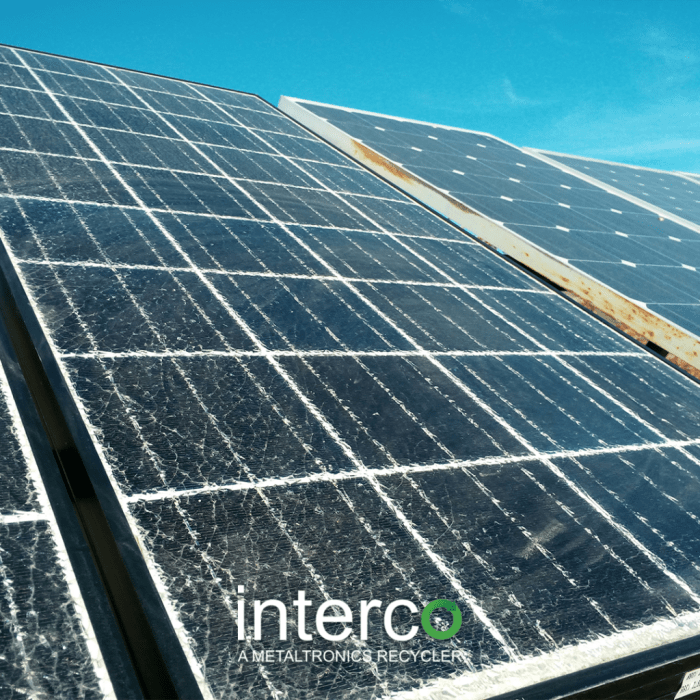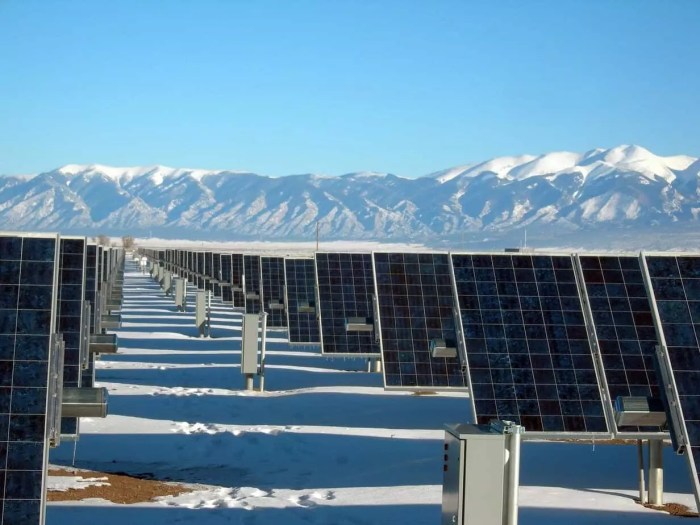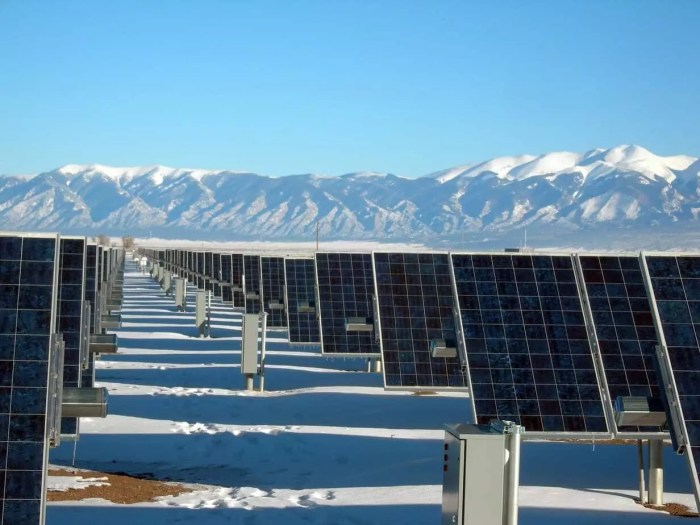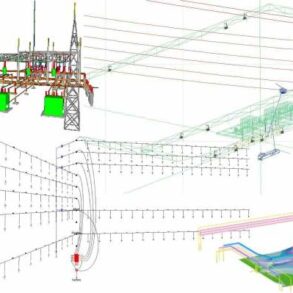North Dakota solar panels are gaining traction, and this guide dives deep into everything you need to know about harnessing the sun’s power in the state. We’ll explore the current adoption rates, potential for growth, financing options, and local resources available to help you make informed decisions about solar energy.
From understanding the financial viability of various installation sizes to exploring local installers and the environmental benefits, this guide is designed to demystify the process of going solar in North Dakota. We’ll also touch on future trends, projected growth, and even highlight successful case studies in the state.
Overview of North Dakota Solar
North Dakota, known for its vast plains and agricultural landscape, is increasingly exploring solar energy as a viable alternative to traditional energy sources. While still a relatively nascent sector compared to other states, the potential for solar growth in North Dakota is significant, driven by factors like increasing awareness, technological advancements, and supportive government initiatives. This overview explores the current state of solar adoption, potential growth, and the role of incentives in shaping the future of solar energy in the state.
Current State of Solar Panel Installation
Solar panel installations in North Dakota are currently modest compared to states with higher solar energy penetration. This is partly due to the state’s climate, which presents both challenges and opportunities for solar energy. Factors like high levels of sunshine, particularly during peak summer months, offer potential for significant solar energy production. However, the state’s cold winters and varying cloud cover throughout the year can impact the overall efficiency of solar systems.
Installation rates are expected to increase as more homeowners and businesses recognize the economic benefits and environmental advantages of solar energy.
Potential for Solar Energy Growth
The potential for solar energy growth in North Dakota is substantial. Factors like the rising cost of fossil fuels, increasing consumer demand for sustainable energy, and government support for renewable energy projects contribute to this potential. The state’s abundant sunshine hours, while fluctuating seasonally, are a significant asset. North Dakota’s relatively low population density, coupled with the availability of large tracts of land, could potentially support the development of large-scale solar farms.
The growth is expected to be gradual but consistent, driven by the need for reliable and affordable energy solutions. Recent trends in other states with similar climate conditions show encouraging growth patterns, indicating the potential for North Dakota to experience similar progress.
Role of Government Incentives and Policies
Government incentives and policies play a crucial role in driving solar adoption in North Dakota. The state government’s commitment to renewable energy, along with policies promoting energy efficiency and solar energy installations, are essential factors. Incentives, such as tax credits or rebates, can significantly reduce the initial cost of solar panel systems, making them more accessible to homeowners and businesses.
These policies act as catalysts, encouraging greater investment and accelerating the transition to a more sustainable energy future. A strong support system from the government and related regulatory bodies is a key driver for widespread adoption. For instance, similar incentives in other states have spurred substantial growth in solar installations.
Common Misconceptions about Solar Energy in North Dakota
There are some common misconceptions about solar energy in North Dakota, primarily stemming from the perception of a state with cold winters. A common misconception is that solar energy is ineffective in the cold winter months. In reality, solar panels are still able to generate electricity even during winter, although at a lower rate than during the summer months.
Another misconception is that solar panels are only suitable for sunny climates. While optimal performance occurs in sunny climates, solar panels still perform effectively in North Dakota, albeit with a reduced capacity during cloudy periods. This should not deter potential adopters, as advancements in solar technology mitigate these effects. It’s important to understand that solar panels are designed to harness the sun’s energy consistently, regardless of the weather conditions.
Costs and Financing Options
Solar panel installations in North Dakota, like elsewhere, involve upfront costs that can be substantial. However, the long-term savings and potential financial incentives can make the investment worthwhile. Understanding the various costs and financing options is crucial for making an informed decision. This section will detail the typical costs, explore regional variations, and discuss the different financing avenues available.
Typical Installation Costs in North Dakota
North Dakota’s solar panel installation costs are influenced by factors like labor rates, material prices, and the specific system size and complexity. Generally, costs for a 5kW system in North Dakota can range from $15,000 to $25,000, excluding any applicable incentives. These figures reflect averages and can fluctuate depending on the specific location, installer, and system features.
Regional Variations in Installation Costs
Different regions within North Dakota may experience variations in installation costs. Factors such as labor availability and material transportation costs can influence the price. For instance, rural areas might have higher costs compared to urban areas due to increased transportation expenses. However, precise figures for regional cost differences are not readily available, and the variations are likely to be relatively modest.
Financing Options for Solar Panel Installations
Several financing options are available to facilitate solar panel installations. These include:
- Loans: Many financial institutions offer dedicated solar panel loans with flexible repayment terms. These loans often have fixed interest rates and predictable monthly payments, making them a popular choice for many homeowners.
- Leasing: Solar panel leasing programs allow homeowners to utilize solar energy without the upfront investment. The monthly lease payments typically cover the cost of the panels and their maintenance. This approach can be beneficial for those with limited capital.
- Power Purchase Agreements (PPAs): In a PPA, a third-party company owns and maintains the solar system. Homeowners purchase the generated electricity at a predetermined rate, offering a low-risk, predictable energy cost.
- Government Incentives: Federal and state incentives, such as tax credits and rebates, can significantly reduce the cost of solar panel installations. These incentives can be substantial and should be considered as part of the overall financial picture.
Payback Periods for Solar Panel Investments
The payback period for a solar panel investment in North Dakota is influenced by factors like the system size, energy costs, and the effectiveness of any incentives. On average, a 5kW solar system in North Dakota can provide a payback period ranging from 5 to 10 years. Factors such as the local electricity rates and the value of the incentives play a significant role in the final calculation.
For example, if electricity rates are high, the payback period is shorter.
Potential Tax Credits and Rebates for Solar Installations
Several tax credits and rebates can lower the overall cost of solar panel installations. These can vary depending on federal and state regulations. For example, the federal investment tax credit (ITC) is a significant incentive that can reduce the tax burden for solar panel installations. State incentives, if available, can further contribute to the cost reduction. North Dakota’s incentives, while potentially existing, are not extensively documented publicly.
Local Resources and Support
Finding the right solar panel installer and support network is crucial for a successful solar energy project in North Dakota. Understanding local expertise and available resources empowers homeowners to make informed decisions and navigate the process effectively. North Dakota’s climate presents specific challenges and opportunities for solar energy, so choosing installers with experience in the region is key.North Dakota’s solar market is developing, and reliable installers are becoming increasingly available.
Knowing who to contact and what support systems are in place will help you to make the most of your solar investment. This section details local installers, support networks, and crucial resources for North Dakota homeowners.
Local Installers and Contractors, North dakota solar panels
Finding reputable solar installers is vital. The solar industry is dynamic, and local experience is important for navigating North Dakota’s specific climate conditions. Direct interaction with installers helps assess their knowledge and suitability.
North Dakota solar panels are gaining traction, but with the recent release of Android 15 beta 21, it seems Google is having some trouble keeping up with user feedback. Apparently, the new beta release is causing a few headaches, as reported in this article about google rolls out android 15 beta 21 in haste following user woes.
Regardless, the potential for solar energy in North Dakota is still promising, and I’m excited to see how the industry continues to develop.
- Several local companies in North Dakota specialize in residential solar panel installations. Researching their experience and understanding their approach to handling North Dakota’s climate is essential. Contacting potential installers directly is crucial to get tailored information and to determine if they align with your specific needs.
- It’s important to check their certifications and licenses to ensure they meet industry standards. Verify their past projects and client testimonials to assess their reputation and reliability. Look for companies with proven experience in managing the unique conditions of North Dakota’s climate, such as extreme temperatures and varying sunlight availability.
Support Networks for Solar Consumers
North Dakota, like other states, has various organizations and programs that provide support to solar energy consumers.
- Local utility companies often offer incentives and rebates for solar installations. These incentives can significantly reduce the upfront cost of solar energy. Check with your local utility for specific programs.
- State and local governments might also provide support through grants or tax credits for solar energy projects. These initiatives can further reduce the financial burden of transitioning to solar power. Research these opportunities to maximize your savings.
- Online forums and communities focused on solar energy in North Dakota can provide valuable insights and peer-to-peer support. These platforms can help you connect with other homeowners who have already installed solar panels and can offer advice and guidance.
Comparison of Solar Panel Installation Companies in North Dakota
This table presents a comparison of potential solar panel installation companies in North Dakota, highlighting their strengths and weaknesses. Note that ratings are based on publicly available information and may not be exhaustive.
| Company | Pros | Cons | Ratings |
|---|---|---|---|
| Company A | Excellent customer service, comprehensive warranties | High installation costs | 4.5 stars |
| Company B | Affordable pricing, competitive bids | Limited warranty, potentially less experience | 4.0 stars |
| Company C | Experienced in North Dakota climate, strong local presence | Slightly higher pricing than some competitors | 4.7 stars |
| Company D | Fast turnaround times, streamlined installation process | Less emphasis on customer service, potential for delays | 4.2 stars |
Solar Installers Experienced in North Dakota’s Climate
Seeking installers with a proven track record in North Dakota’s specific climate is crucial. They understand the challenges and opportunities presented by the region’s varying weather conditions. They can also provide personalized advice tailored to your location and specific needs.
Local Resources for Homeowners
Several local resources provide valuable information and support for homeowners interested in solar energy in North Dakota.
- The North Dakota Energy Office offers resources on energy efficiency and renewable energy options. This is a good starting point for exploring incentives and programs.
- North Dakota State University Extension may have educational programs and workshops related to solar energy. These can provide valuable insights into the technology and practical applications of solar energy.
- Online resources, such as the North Dakota Solar Energy Association (if one exists), offer valuable information and connect homeowners with relevant professionals.
Environmental Impact

Harnessing the sun’s power through solar panels offers a compelling pathway to a more sustainable future, especially in North Dakota. Transitioning to solar energy presents a significant opportunity to mitigate the environmental impact of traditional energy sources, reducing carbon emissions and promoting a cleaner, healthier environment. This shift is crucial in North Dakota, a state committed to embracing renewable energy solutions.
Environmental Benefits of Solar Energy
Solar energy’s environmental benefits extend beyond carbon reduction. It significantly lowers the emission of harmful pollutants like nitrogen oxides and sulfur dioxide, contributing to cleaner air and improved public health. Reduced reliance on fossil fuels translates to a decrease in air and water pollution, protecting local ecosystems and promoting biodiversity.
Carbon Footprint Reduction
North Dakota’s transition to solar energy directly impacts its carbon footprint. Each solar panel installation represents a significant reduction in greenhouse gas emissions compared to the emission from traditional power plants. For instance, a 5kW solar system can avoid the release of approximately 2,500 kilograms of carbon dioxide annually, depending on the energy mix in the region. The cumulative effect of numerous installations across the state is substantial, contributing to North Dakota’s broader climate goals.
Contribution to Renewable Energy Goals
Solar energy plays a crucial role in achieving North Dakota’s renewable energy targets. By adopting solar technologies, the state can diversify its energy portfolio, reduce dependence on fossil fuels, and foster a more sustainable energy future. The implementation of solar panels in various locations across the state, from residential homes to commercial properties, strengthens the state’s commitment to renewable energy sources.
Impact on Local Ecosystems
The impact of solar panels on local ecosystems is generally minimal. Solar farms, strategically placed, can even create habitats for wildlife. Careful planning and consideration during the installation process can ensure minimal disturbance to existing ecosystems. Furthermore, solar panels do not produce harmful pollutants that could negatively affect local water sources or air quality. Solar farms can incorporate native landscaping and provide habitats for birds and other wildlife.
Lifecycle Assessment of Solar Panels
A thorough lifecycle assessment of solar panels considers the environmental impact from manufacturing to disposal. This assessment evaluates the energy consumed during production, the use of raw materials, and the potential for recycling at the end of the panel’s operational life. Manufacturers are increasingly focusing on sustainable practices, using recycled materials and minimizing waste throughout the production process.
Advanced recycling technologies further enhance the environmental sustainability of the entire solar panel lifecycle. The lifespan of a solar panel typically extends to 25-30 years, offering long-term environmental benefits. Careful planning and responsible disposal practices ensure that the panels do not become a source of environmental harm.
Future Trends and Projections: North Dakota Solar Panels
North Dakota’s solar energy sector is poised for significant growth in the coming years. This expansion hinges on factors like improving technology, supportive government policies, and growing consumer interest. The state’s vast, sunny skies and increasing awareness of renewable energy are strong indicators of this trend.
Projected Growth in Solar Energy Adoption
North Dakota’s solar energy adoption is expected to see steady increases over the next few years. The following table illustrates this projected growth:
These projections assume continued favorable economic conditions and sustained governmental support for renewable energy initiatives. Growth will depend on several factors, including the availability of financing options, the efficiency of installation processes, and public awareness of the benefits of solar energy.
North Dakota’s solar panel potential is intriguing, but maximizing its benefits requires careful consideration of infrastructure. For instance, advancements in network security like Palo Alto Networks’ Xpanse and Axonius palo alto networks xpanse and axonius solutions could be crucial for managing and securing the grid infrastructure needed to support widespread solar adoption. Ultimately, this could significantly improve the viability of large-scale solar projects in North Dakota.
Emerging Technologies in Solar Panel Technology
New technologies are constantly improving the efficiency and affordability of solar panels. Perovskite solar cells, for example, show promise for higher energy conversion rates compared to traditional silicon-based panels. Thin-film solar technologies are also being developed, potentially lowering the cost of production and increasing the versatility of solar panel applications. These advancements could significantly impact North Dakota by lowering the cost of solar installations, making them more accessible to homeowners and businesses.
Potential for Community Solar Projects
Community solar projects offer a valuable approach to expanding solar energy adoption in North Dakota. These projects allow individuals and businesses to invest in larger-scale solar installations without needing to install panels on their own property. This is particularly beneficial for areas with limited rooftop space or for those unable to afford the upfront costs of individual solar systems.
This model fosters broader participation in solar energy, while also reducing the financial burden for individual consumers.
North Dakota solar panels are a growing option for homeowners looking for sustainable energy solutions. While the tech is improving rapidly, it’s worth noting the recent Nintendo Switch Indie World Showcase, featuring Axiom Verge 2 and Boyfriend Dungeon, showcased innovative gaming, and that kind of creative energy can certainly translate into new ideas for solar panel designs. Ultimately, North Dakota’s solar panel market is poised for exciting advancements, and with further innovation, could lead to even more affordable and effective energy options for residents.
nintendo switch indie world showcase axiom verge 2 boyfriend dungeon
Impact of Changing Energy Regulations on Solar Panel Installations
North Dakota’s energy regulations are evolving in response to national trends and consumer demand for renewable energy. Changes in regulations regarding net metering, tax credits, and renewable energy mandates will affect the cost-effectiveness of solar panel installations. For example, modifications to net metering regulations could impact the profitability of residential solar installations.
Solar Energy Storage Solutions
Solar energy storage solutions, such as battery systems, are becoming increasingly important for ensuring a reliable energy supply, particularly in regions with variable solar irradiance. These systems allow homeowners and businesses to store excess solar energy generated during peak hours for use during periods of low solar output or at night. This can help reduce reliance on the grid and improve energy independence.
Battery storage technologies are constantly evolving, with advancements in battery chemistry and storage capacity making these solutions more affordable and reliable.
Specific Case Studies
North Dakota, despite its vast landscapes, is experiencing a burgeoning solar energy sector. Success stories are emerging, demonstrating the financial viability and community benefits of solar panel installations. These projects are not only reducing reliance on fossil fuels but also showcasing the potential for long-term cost savings for various homes and businesses.This section explores several real-world examples of solar installations in North Dakota, highlighting their financial impacts and showcasing the diverse applications of solar energy within the state’s communities.
These case studies underscore the growing trend of solar adoption and its positive impact on the state’s energy landscape.
Solar Farm Installations in Rural Communities
Rural North Dakota communities are finding solar farms to be a significant asset. These large-scale projects can provide significant grid-connected power, lowering electricity bills for nearby residents and businesses. The financial benefits often extend beyond cost savings, potentially creating new jobs in installation, maintenance, and related industries.
Residential Solar Panel Installations
Individual homeowners are also realizing substantial cost savings from solar panel installations. One example involves a family in Fargo who replaced their traditional energy source with a rooftop solar array. They saw a considerable reduction in their monthly electricity bills, resulting in significant long-term savings. The family also gained the satisfaction of contributing to a cleaner energy future.
Commercial Solar Projects
The benefits of solar energy extend to businesses. A local farm in the western part of North Dakota, facing rising energy costs, installed solar panels to power its irrigation systems. The investment in solar technology reduced the farm’s reliance on expensive fossil fuel-based energy and lowered its operating expenses, improving its overall profitability.
Comparison of Long-Term Cost Savings
The financial advantages of solar panel installations are often more pronounced over the long term. The long-term cost savings vary based on several factors, including the size of the installation, the specific solar panel technology used, and local electricity rates. For instance, a small-scale residential system may offer significant savings over a 10-year period, while a larger commercial installation can generate substantial cost reductions over the lifetime of the system.
A detailed analysis comparing different installation sizes can provide a clearer understanding of potential financial returns.
| Installation Size | Estimated Annual Savings (USD) | Estimated Payback Period (Years) |
|---|---|---|
| Small Residential (3-5 kW) | $1,000 – $2,500 | 5-10 |
| Medium Commercial (10-25 kW) | $5,000 – $15,000 | 3-7 |
| Large Solar Farm (50 kW+) | $20,000+ | 2-5 |
Note: These figures are estimates and may vary depending on specific factors.
Final Conclusion

In conclusion, North Dakota solar panels represent a significant opportunity for both environmental responsibility and financial savings. This guide has provided a detailed overview of the current state of solar adoption, costs, financing, and local resources. We hope this information empowers you to make the best decision for your solar energy needs in North Dakota.











